Resources
ISAM Community Documents
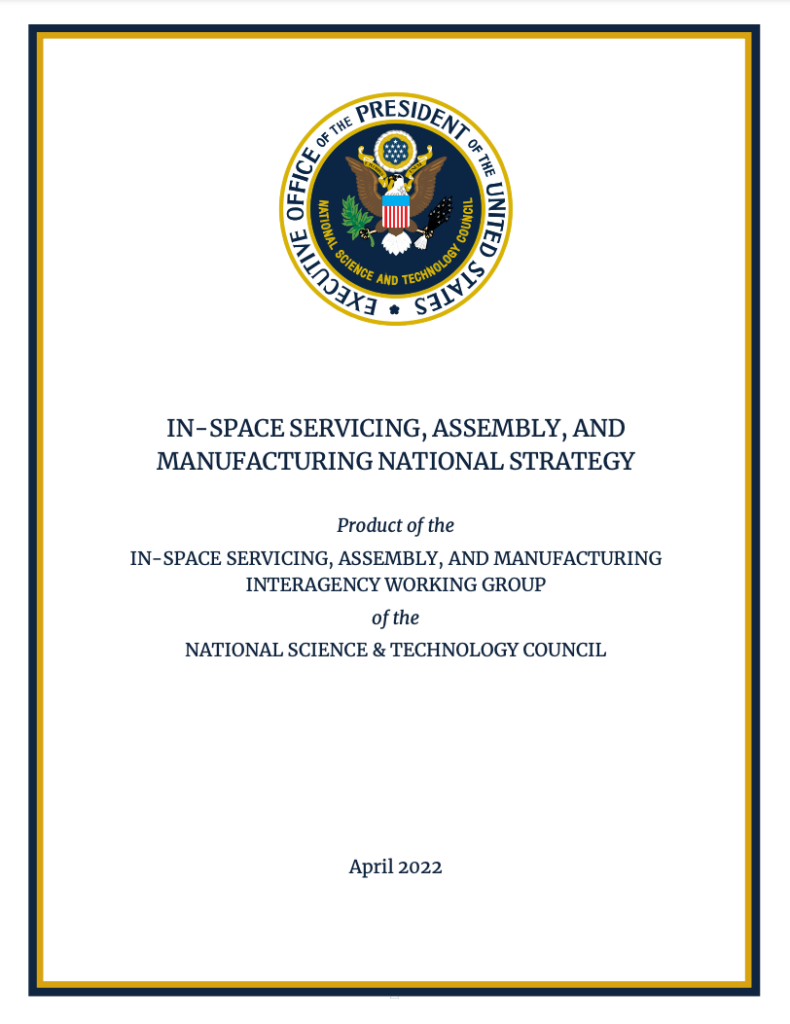
ISAM National Strategy (April 2022)
“This National Strategy outlines how the United States will support and stimulate the United States Government (USG), academic, and commercial ISAM capability development. It provides strategic goals to advance ISAM capability development discussed in the United States Space Priorities Framework. The next step following the strategy is to develop USG implementation action plans to fulfill the goals.”
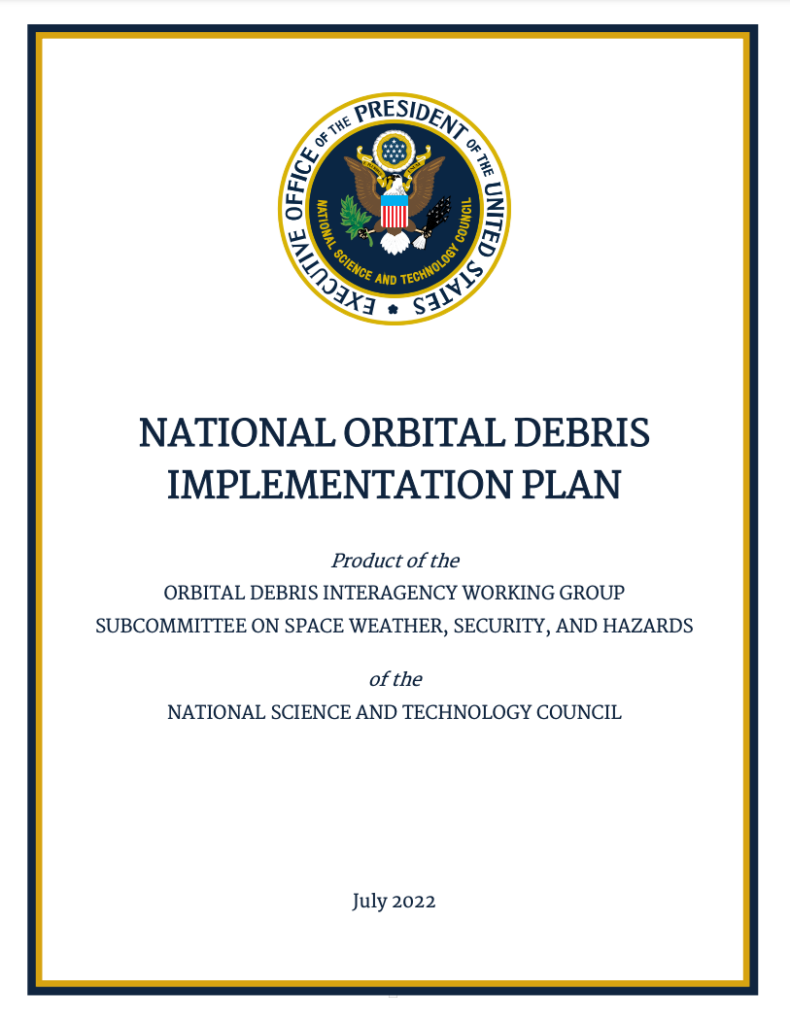
National Orbital Debris Implementation (July 2022)
“This Orbital Debris Implementation Plan provides tangible actions the United States will pursue to address the hazards posed by orbital debris…. This Implementation Plan accomplishes objectives outlined in the U.S. Space Priorities Framework. This Implementation Plan also builds upon the National Orbital Debris Research and Development (R&D) Plan published in 2021.”
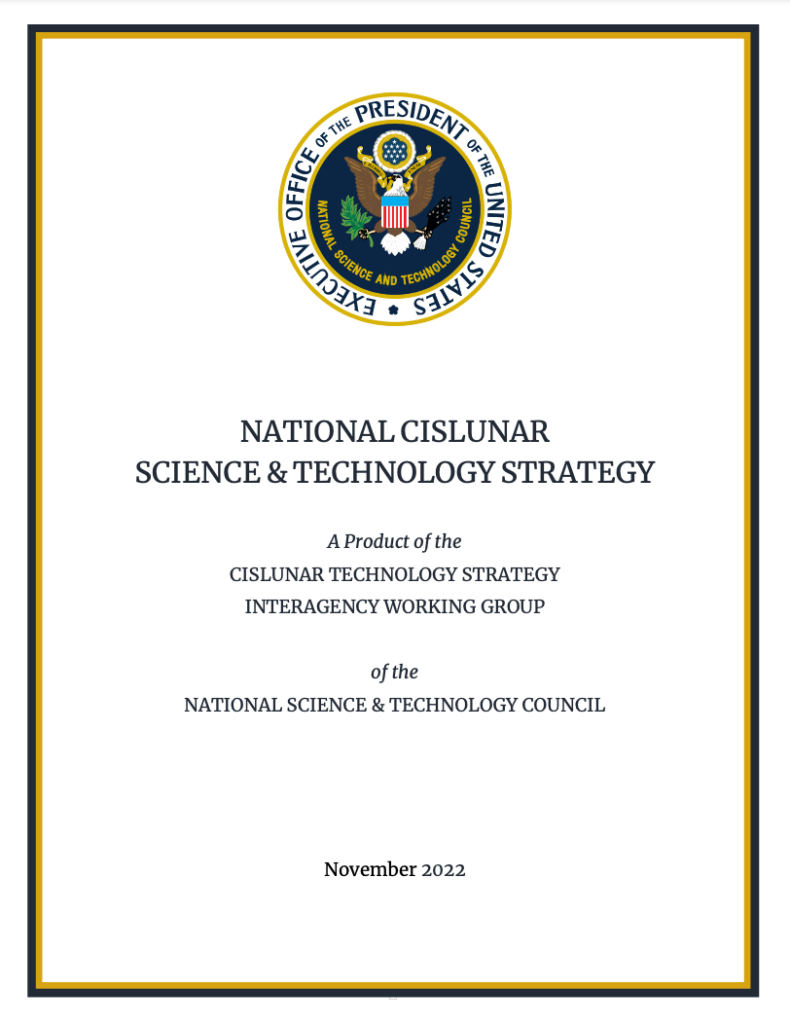
National Cislunar Strategy (November 2022)
“The National Cislunar Science & Technology Strategy provides a vision and the first science and technology objectives for realizing U.S. leadership in Cislunar space, including the Moon. Fostering scientific discovery, economic development, and international cooperation are essential to sustaining this leadership.”
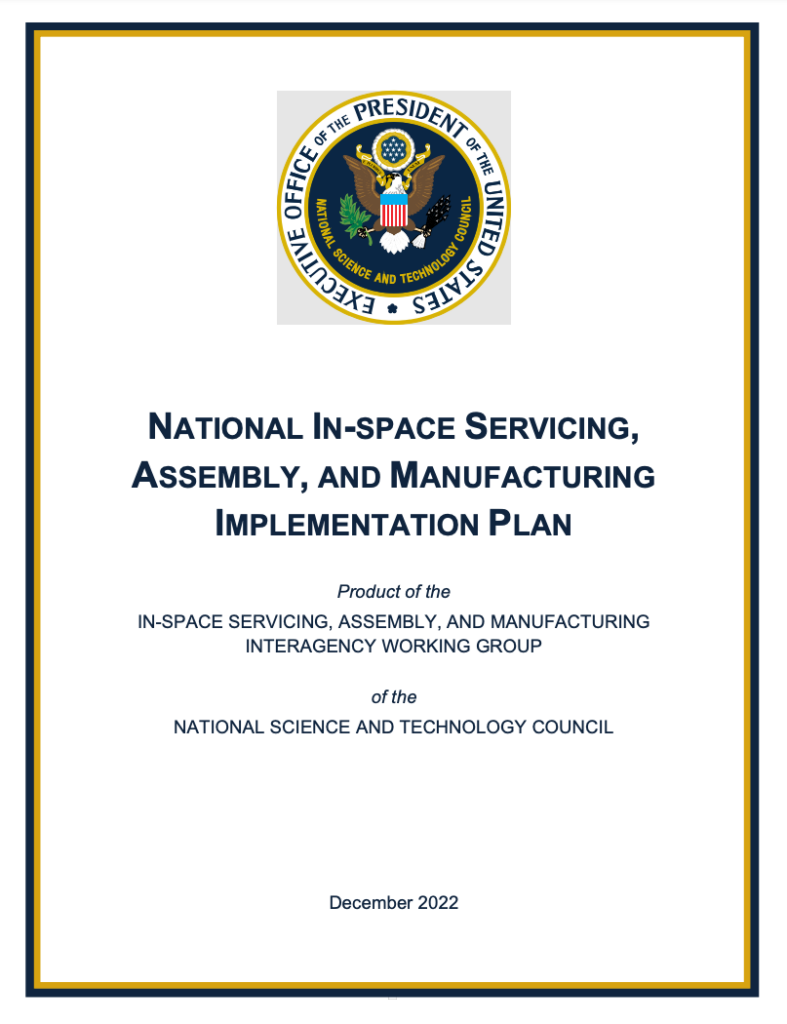
National ISAM Implementation Plan (December 2022)
“The ISAM Implementation Plan implements the strategic vision established in the April 2022 ISAM National Strategy… Achieving the strategic goals requires U.S. leadership and successful engagement and coordination with industry, non-profit organizations, academia, and the international community. Each of the National ISAM strategic goals is broken down into objectives to organize 28 discrete ISAM implementation activities that Federal departments and agencies will undertake to advance the ISAM National Strategy.”
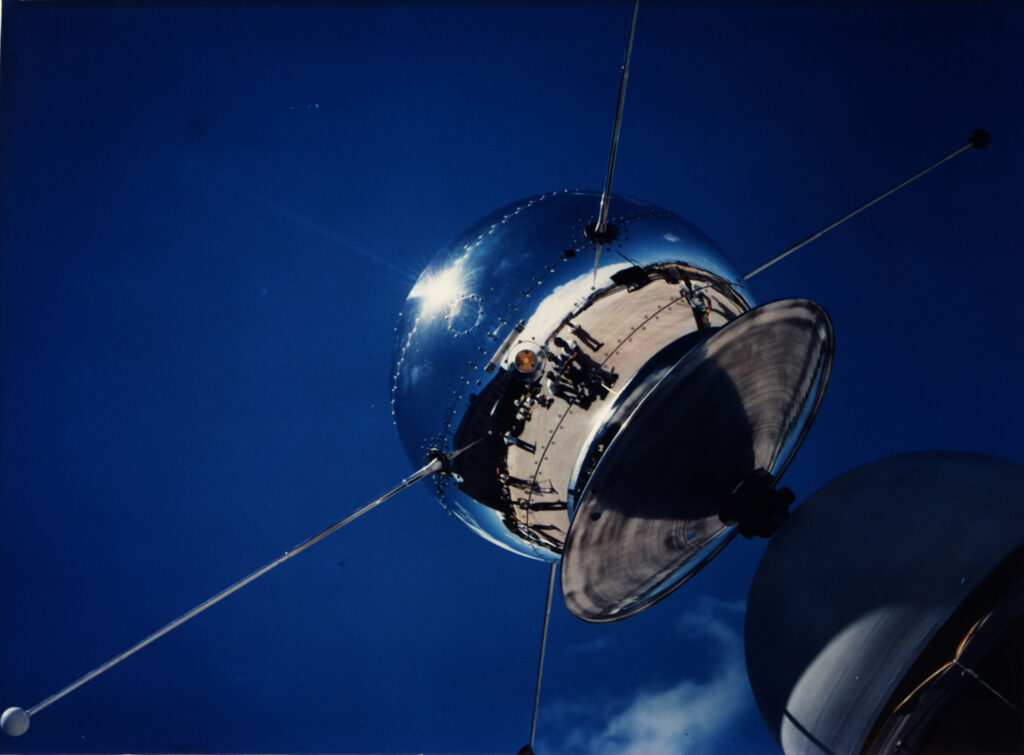
COSMIC Products
For the growing list of publicly released products produced by COSMIC members, click here.
Note: This list is only that of documents that COSMIC members, with the approval of the Steering Committee, have agreed to make public. If you are not a member of COSMIC, you can find out how to join here.

Initial COSMIC Engagement Session
A virtual engagement session was held to share more about COSMIC and solicit feedback regarding consortium operations and outcomes needed to meet the U.S. ISAM community’s needs.
Topics included:
- COSMIC Overview
- Consortium Governance, Leadership, and Operations
- Caucuses and Focus Areas
- Community Building and Potential Products
Full video presentation and additional resources are now available.
Groups and Related Activities of Interest to ISAM:
AIAA
American Institute of Aeronautics and Astronautics
Mission: To ignite and celebrate aerospace ingenuity and collaboration, and its importance to our way of life.
Find out more at aiaa.org
ARM
The Advanced Robotics for Manufacturing Institute
Mission: Exists to strengthen U.S. manufacturing through innovations in advanced manufacturing technology, particularly robotics and artificial intelligence (AI), and prepare the workforce to work alongside these technologies.
Find out more at arminstitute.org
CONFERS
The Consortium for Execution of Rendezvous and Servicing Operations
Mission: Develop industry-led recommendations for standards and guide international policies for servicing that contribute to a sustainable, safe, and diverse space economy.
Find out more at satelliteconfers.org
IEEE
The Institute of Electrical and Electronics Engineers
Mission: To foster technological innovation and excellence for the benefit of humanity.
Find out more at ieee.org
ISDT
In-Space Developmental Test (iSDT) Initiative
Mission: To accelerate new technology development, overcome the technical readiness levels 4‒7 “Valley of Death,” and reduce acquisition cost.
For more information, contact Elozor Plotke at elozor.plotke(at)linquest.com and Peter Lai at peter.lai(at)linquest.com
ISECG
The International Space Exploration Coordination Group
Mission: Provide a coordination mechanism through which individual space agencies may exchange information regarding interests, objectives, and plans in space exploration.
Find out more at globalspaceexploration.org
ITU
International Telecommunication Union
As the United Nations specialized agency for digital technology, we are working towards harnessing innovation and connecting everyone to ensure a better future for all.
Find out more at www.itu.int
LOGIC
Lunar Operating Guidelines for Infrastructure Consortium
Mission: Convene stakeholders across industry, academia, and government to identify critical lunar infrastructure interoperability and interface needs.
Find out more at logic.jhuapl.edu
LSIC
Lunar Surface Innovation Consortium
Mission: To harness the creativity, energy, and resources of the nation to help NASA keep the United States at the forefront of lunar exploration.
Find out more at lsic.jhuapl.edu
NCDMM
National Center for Defense Manufacturing and Machining
Mission: Execute applied research and development projects to improve Department of Defense (DoD) weapon and support systems by integrating key technologies, new materials, and innovative manufacturing processes.
Find out more at www.ncdmm.org
NSF
National Science Foundation
Mission: An independent federal agency that supports science and engineering in all 50 states and U.S. territories.
Find out more at nsf.gov
NSGF
The National Space Grant Foundation
Mission: Support and enhance the Space Grant Consortia in every state to carry out education, research, and public outreach activities in science, mathematics, engineering, and technology and additional fields, related to space, aeronautics, aviation, and Earth system science.
Find out more at spacegrant.org
SEDS
Students for the Exploration and Development of Space
Mission: To promote space exploration and development through educational and engineering projects.
Find out more at seds.org
SFA
Space Force Association
Mission: Achieving superior national space power by shaping a Space Force that provides credible deterrence in competition, dominant capability in combat, and professional services for all partners.
Find out more at ussfa.org
